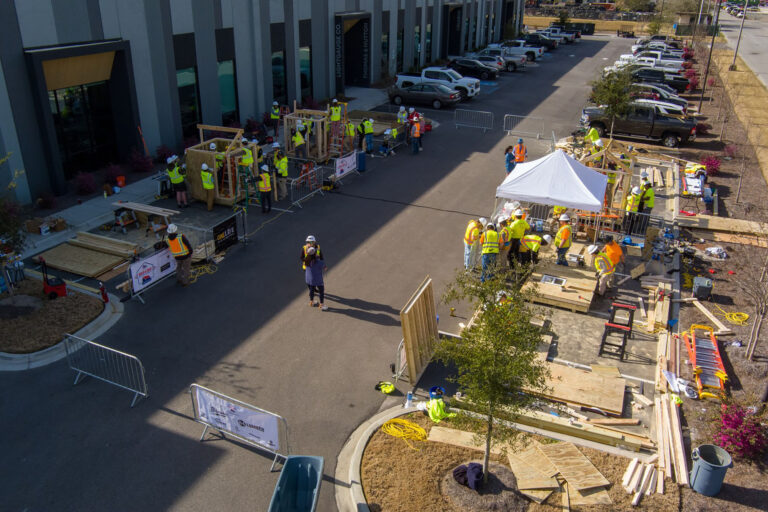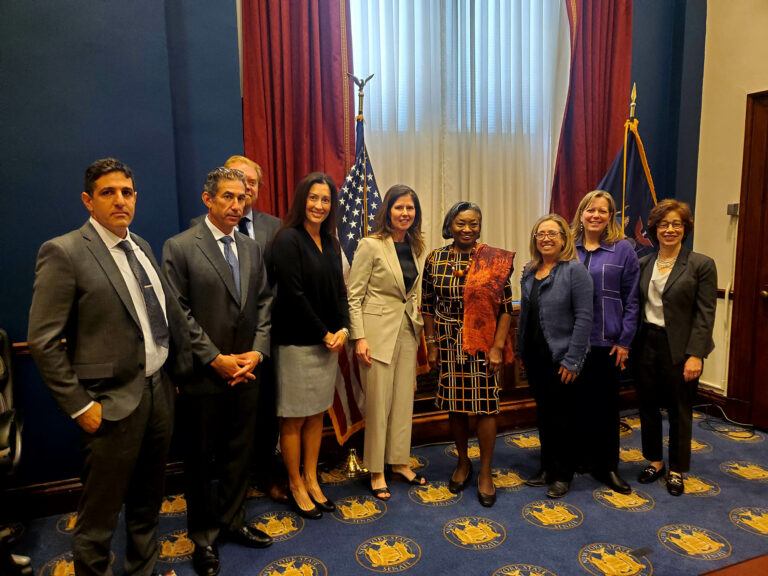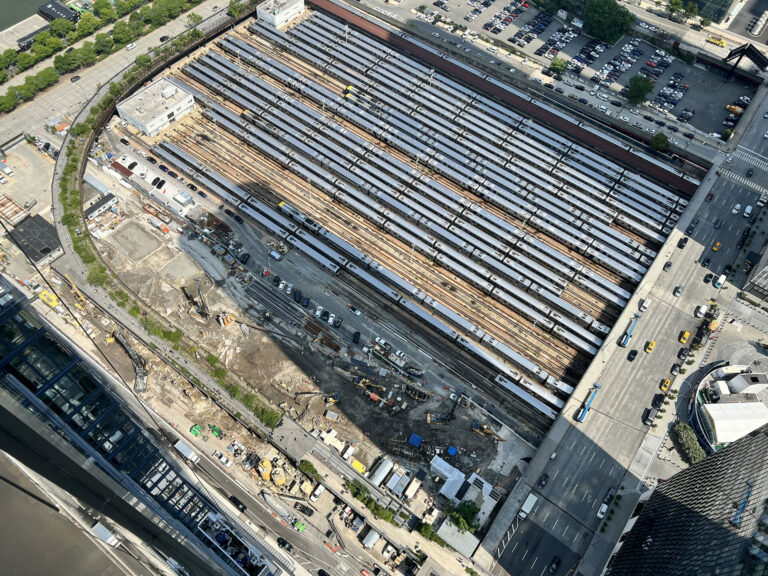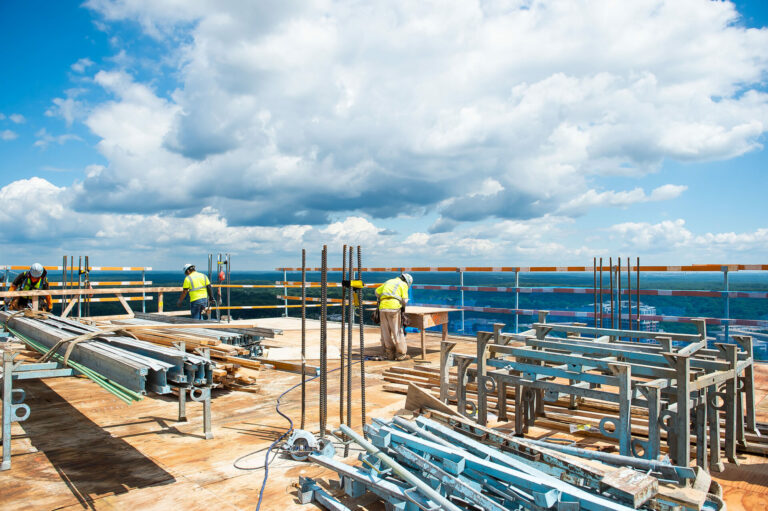With inflation at record level rates across Canada, a shortage of skilled workers along with rising costs of materials, the future of the construction industry looks uncertain. These are the thoughts of John Mollenhauer, President and CEO of Toronto Construction Association (TCA). TCA is a mixed trade association, largely representing the industrial, commercial, and institutional sectors of the industry. The association segments its members into five categories – owners of public and private projects, allies to the industry (consulting engineers, architects, designers), trade contractors, general contractors, and a division the association calls the manufacturing service and supply sector.
Suzana Fernandes, Vice President of Operations at TCA, explains that the association offer day-to-day services such as selling construction documents and providing related services. Alongside this, TCA has a full-fledged construction institute and provides discounted opportunities for ongoing professional development to its members that is targeted at just about anybody in our industry. Another vital component in the work being done by the association is around education. This is largely achieved by ensuring that its members are kept informed about what is happening in the industry on topics such as legislation, the discussions governments are having regarding changes to the industry, and how these decisions affect the industry at large.

The Greater Toronto Area, in high-rise construction terms, is the busiest market in North America. With 225 out of 440 tower cranes in North America housed in Toronto, this area is a hugely positive environment for the industry. This level of high-rise construction does, however, have unexpected drawbacks. In addition to exacerbating the already high levels of congestion in the city, it can lead to an increase in noise levels; something the city managers are eager to minimize. This, Mollenhauer explains, invariably leads to difficulties. New legislation that seeks to create balance in the city by attaching higher costs to any noise generated early or late in the day has resulted in a greater difficulty in delivering material and equipment to sites in Toronto. With global supply chain issues yet to be resolved, Mollenhauer explains that this legislation is adding an additional layer of complexity for stakeholders. “We’re always trying to compensate for delays when we can’t get materials and equipment. So, when it arrives you need to move it quickly to the site. It’s expensive to move it onto the jobsite unless you do so during the day and then it is congested when you do.” Mollenhauer explains that by introducing these measures to protect consumers in the city, it has the unintended consequence of driving the cost of construction up, thus, putting the future of the industry in uncertain territory.
As the industry emerges from the Pandemic, it is important that those within the TCA reflect and grow from the changes and challenges that the industry faced throughout the past two years. Mollenhauer notes that throughout the pandemic, despite infrastructure being classed as an essential service and therefore protected under the COVID legislation, productivity was actually down due to newly implemented safety protocols and physical separation. Projects disrupted by COVID had “ridiculously high costs”, according to Mollenhauer. Unfortunately for those at the coal face, it was almost impossible to recoup these costs as contracts were solely based around lost time. This has meant that the industry has had to rely on buyers of construction recognizing that the pandemic could not have been foreseen when these projects were tendered and are therefore a reasonable recoverable expense.
“As the industry emerges from the Pandemic, it is important that those within the TCA reflect and grow from the changes and challenges that the industry faced throughout the past two years.”
On the union side, Mollenhauer explains that this was a “collective bargaining year” with labor agreements being renegotiated at considerably higher costs. This is something which, he argues, indirectly affects all labor and when coupled with labor and supply shortages, is hugely problematic for projects in the region. In a time when the industry is in need of stability and calm, this is unfortunate. Furthermore, with inflation rates currently hovering around seven percent, the market is in a place of deep uncertainty. Mollenhauer explains that normally in this situation the Bank of Canada would raise interest rates and bring inflation under control, but this is not so easily done now. According to Mollenhauer, banks are concerned that “Canadians have amassed too much debt,” meaning that if interest rates go up quickly, they will be unable to make their mortgage payments which will cause more damage than it would fix.
Despite all of this, the Toronto Construction Association is committed to bringing change, stability and positivity to its members and the wider industry. Fernandes states that the TCA is always asking questions and seeking to discover “the biggest issues that our industry is facing.” By instigating conversations, identifying what needs to be done and by speaking to legislative bodies about what needs to change, she believes that the association can provide the best outcomes for its members. To this end, Mollenhauer represents TCA on the board of the Canadian Construction Association (CCA), advocating aggressively on behalf of the industry in Toronto, informing the CCA on key national issues and “influencing favorable legislation to help the industry.”
TCA also has an eye on the future development and growth within the industry. According to Fernandes, the association has developed a young construction leaders committee which aims to engage people in their youngest years about viewing the industry differently. Fernandes explains, “TCA is committed to raising awareness about the importance of considering a career in construction and really bringing that engagement piece to not just those that are seasoned in the industry, but those that are new to the industry and considering the career.”
With this in mind, it could be easy to assume that the outlook is a guaranteed success. However, by noting that The Old Construction Sector Council in Ottawa forecasts a shortfall of over 300,000 skilled workers, a third of the entire skilled labor market in Canada, Mollenhauer is aware that issues are still present. Despite this, he is cautiously positive about the future. He explains that recent global events have created a great deal of uncertainty in the market. “The high cost of construction theoretically drives investors elsewhere. While the government would love to spend money on infrastructure, we need money for other things at the moment. Particularly in the wake of the pandemic.”
However, in terms of the outlook for the rest of 2022 and into next year, Mollenhauer believes that positive changes are imminent, and the outlook is one of huge potential. With an ever-growing demand for both housing and infrastructure, the scope for growth is certain to continue. “No market can be this superheated and not have kind of a legacy supply into the future.” This demand, amplified by the cut and thrust of business in markets where many companies are downsizing and therefore moving from one space to another, puts those at the Toronto Construction Association in a positive mood for 2023. With the association backing its members to continue the post-pandemic bounce and make gains across all aspects of the industry, it seems that the future is one of genuine potential. A future based on education, solidarity and excellence.






















